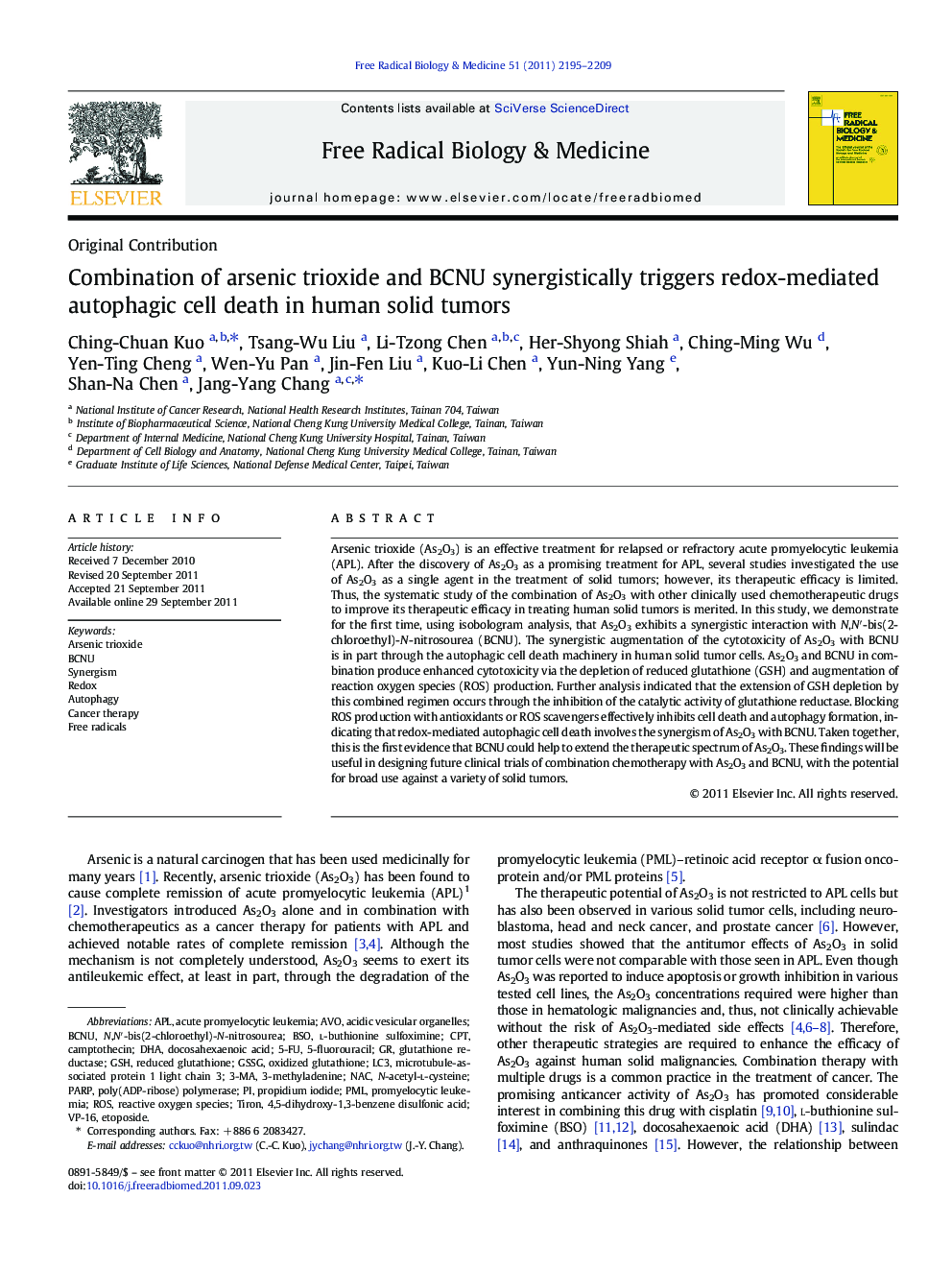| Article ID | Journal | Published Year | Pages | File Type |
|---|---|---|---|---|
| 1908884 | Free Radical Biology and Medicine | 2011 | 15 Pages |
Arsenic trioxide (As2O3) is an effective treatment for relapsed or refractory acute promyelocytic leukemia (APL). After the discovery of As2O3 as a promising treatment for APL, several studies investigated the use of As2O3 as a single agent in the treatment of solid tumors; however, its therapeutic efficacy is limited. Thus, the systematic study of the combination of As2O3 with other clinically used chemotherapeutic drugs to improve its therapeutic efficacy in treating human solid tumors is merited. In this study, we demonstrate for the first time, using isobologram analysis, that As2O3 exhibits a synergistic interaction with N,N′-bis(2-chloroethyl)-N-nitrosourea (BCNU). The synergistic augmentation of the cytotoxicity of As2O3 with BCNU is in part through the autophagic cell death machinery in human solid tumor cells. As2O3 and BCNU in combination produce enhanced cytotoxicity via the depletion of reduced glutathione (GSH) and augmentation of reaction oxygen species (ROS) production. Further analysis indicated that the extension of GSH depletion by this combined regimen occurs through the inhibition of the catalytic activity of glutathione reductase. Blocking ROS production with antioxidants or ROS scavengers effectively inhibits cell death and autophagy formation, indicating that redox-mediated autophagic cell death involves the synergism of As2O3 with BCNU. Taken together, this is the first evidence that BCNU could help to extend the therapeutic spectrum of As2O3. These findings will be useful in designing future clinical trials of combination chemotherapy with As2O3 and BCNU, with the potential for broad use against a variety of solid tumors.
Graphical abstractFigure optionsDownload full-size imageDownload high-quality image (78 K)Download as PowerPoint slideHighlights► As2O3 exhibits a synergistic interaction with BCNU in human solid tumor cells. ► Redox–mediated autophagic cell death involves the synergism of As2O3 with BCNU. ► Combination produce enhanced cytotoxicity by GSH depletion and ROS augmentation. ► The extending depletion of GSH is through the glutathione reductase inactivation. ► Combination of As2O3 and BCNU may be a promising regimen for solid tumor treatment.
